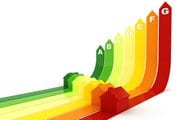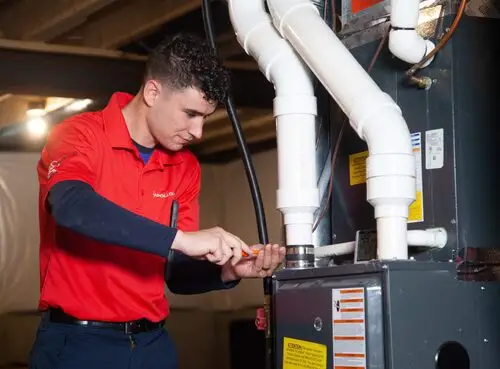Blog
5 Gas Furnace Retrofits & Component Upgrades to Save Money

Your home’s heating system should be as efficient as possible to avoid high utility bills. During the winter months, however, it can become challenging to keep your energy bills under control when your furnace is likely running constantly.
One of the main reasons you may see a rise in your heating bill is because your gas furnace is not running as efficiently as it should be. In fact, your gas-fired furnace could be costing you a significant amount of money compared to newer models that are more efficient.
To improve your furnace’s energy efficiency, there are two options you can consider: upgrade to a newer furnace, or retrofit your current furnace.
What Does It Mean to Retrofit a Furnace?

Retrofitting a furnace is the process of integrating newer components into an older model for the purpose of improving efficiency. Instead of having to get a full furnace replacement, you can keep the system you have and still lower the cost of your home’s energy bills.
Because many homeowners may not know what retrofitting is, they may not realize it’s an option rather than having to pay for a full replacement. Fortunately, there are many HVAC companies that are capable of performing a furnace retrofit for your home as a more cost-effective measure to fight rising energy costs.
Benefits of Retrofitting a Gas Furnace
Saving money isn’t the only benefit that comes with retrofitting a gas furnace. Homeowners can experience many other advantages as well, including:
- Energy and Money Savings: The ultimate goal of retrofitting your gas furnace is to improve the unit’s energy efficiency. By doing so, you’ll see significant savings on your next utility bill.
- Extended System Lifespan: When upgrades are made to your furnace, the unit’s lifespan is easily extended. This means you can avoid any costs associated with repairs and replacements.
- More Comfort: When a gas furnace runs more efficiently, you are more likely to experience better comfort levels in your home, including more effective heating and improved indoor air quality.
- Utility Rebates: You may qualify for a rebate from your utility company by retrofitting your furnace. Contact your utility company to find out more.
5 Ways to Retrofit & Upgrade Your Gas Furnace for Efficiency
There are a number of ways that a gas furnace can be retrofitted. Many of the unit’s components can receive an upgrade, giving you peace of mind that your system will last for many more years and save you money.
1. Vent Dampers
Adding vent or flue dampers keeps heat from escaping up the chimney by closing the vent when it isn’t firing. Larger units benefit from this more than smaller ones. Vent dampers may not be cost-effective if you have a newer, properly sized unit, as they usually have this feature built-in.
2. Intermittent-Ignition Devices
Older furnaces have pilot lights that continuously stay lit. These devices replace the ignition so that it only stays on and burns gas when it's needed, reducing energy consumption.
3. Downsizing the Burner
Many furnaces are larger than needed in today’s energy-efficient, insulated homes. If your old furnace is modified so it can run at only partial power, it will be more efficient and use less energy.
Downsizing your burner involves reducing the size of components like the battles, the burner orifice, and other components. A professional must perform these kinds of changes due to local building regulations.
4. Fan Upgrades
Fans can be upgraded for improved performance, smoother rotation, and more energy efficiency.
Ball bearings and belts can also wear out over time and loosen. Replacing these components will improve energy efficiency and speed up how fast your home warms up.
5. Heat Exchanger
The heat exchanger is your furnace’s main component, which transmits heat from the gas combustion chamber to your air while maintaining a strict divide between the two. Constant heating and cooling, expanding and shrinking, and corrosion-causing moisture can damage your heat exchanger. Upgraded heat exchangers can improve safety and efficiency when replaced in older furnaces.
Converting an Oil or Electric Furnace to a Gas Furnace
Many homeowners who have oil or electric furnaces are curious about converting their fuel to a natural gas option. Natural gas burns more completely and cleanly than oil, and it is much more energy-efficient and cost-effective than electricity.
To convert your furnace to natural gas, you need to have natural gas available to your home. Contact your local natural gas utility company and see if they will service your address.
The main expense in retrofitting your oil or electric furnace to a natural gas furnace is running gas lines to your furnace. Other expenses include removing your oil tank and a new natural gas furnace. The exact cost will depend on how much labor and copper piping are involved, as well as the level of efficiency of your new gas furnace.
If you are ready to make the switch from an oil or electric furnace to a gas furnace, we recommend waiting until your current furnace reaches the end of its lifespan, and it’s time to replace it anyway.
Apollo Home is dedicated to keeping your Cincinnati home comfortable and energy-efficient. Contact us for expert gas furnace retrofitting and upgrade services.



